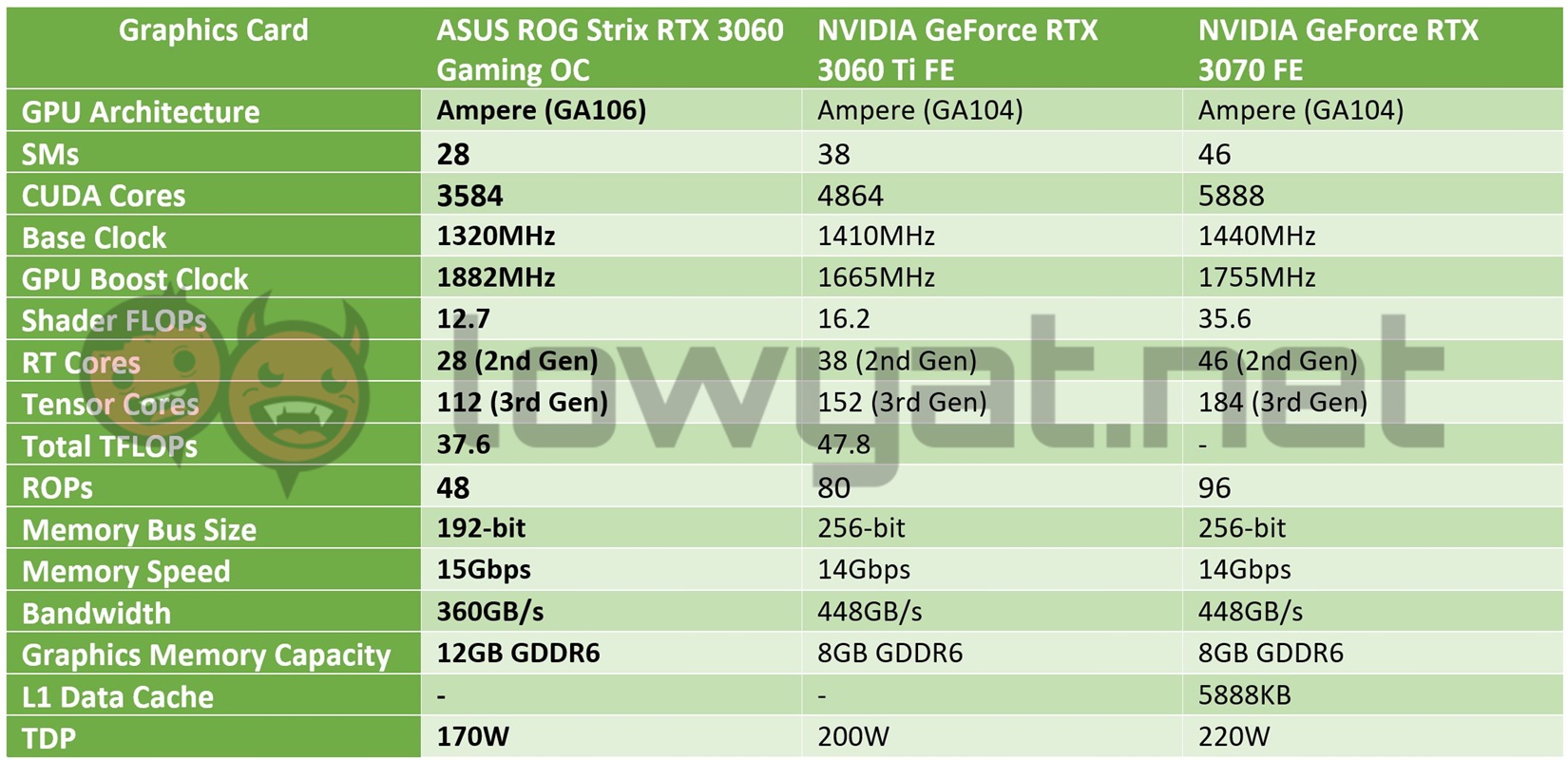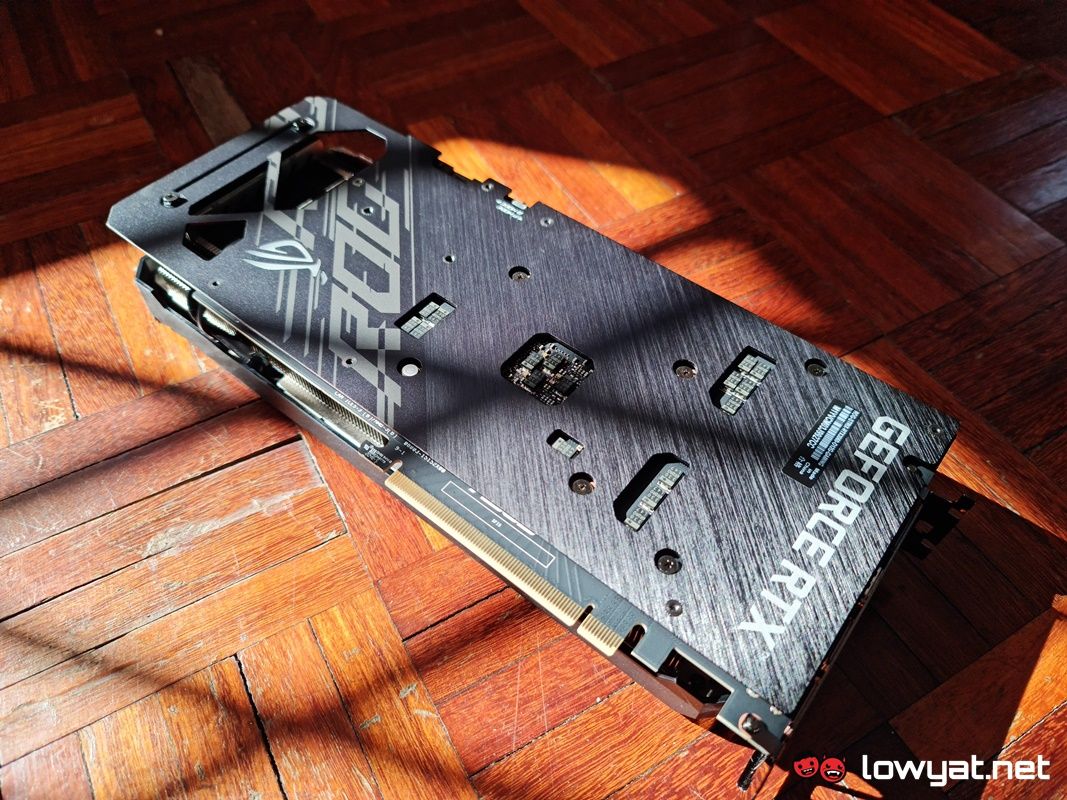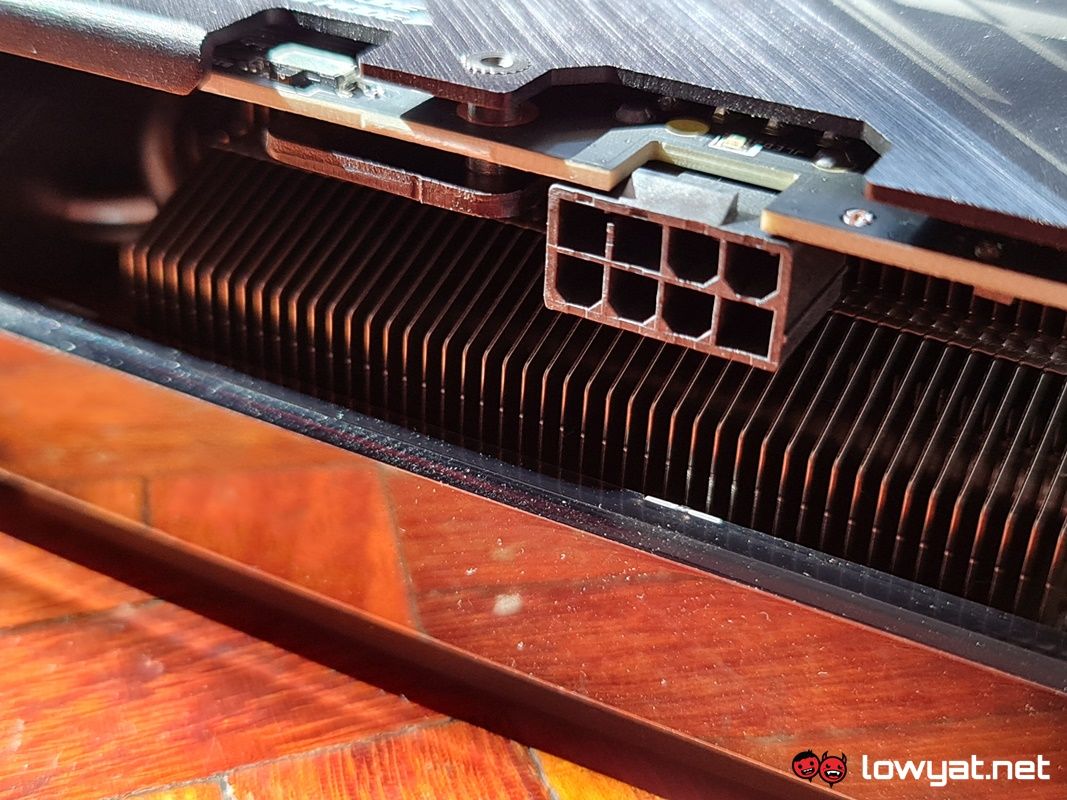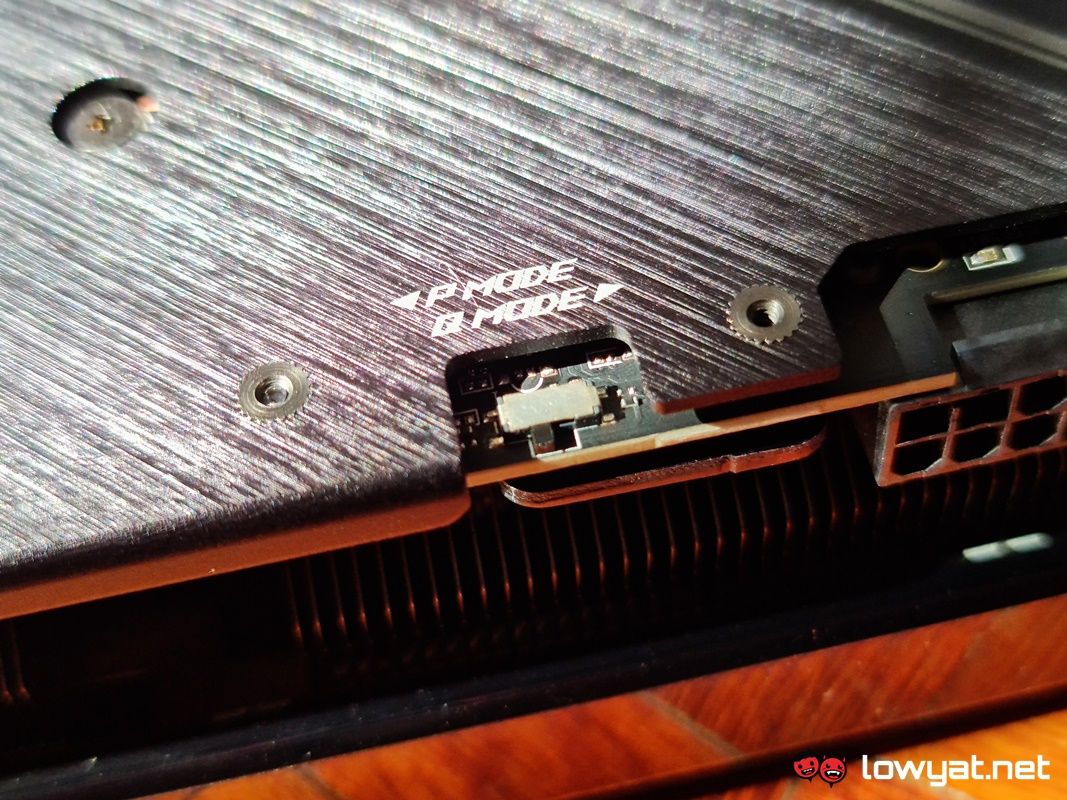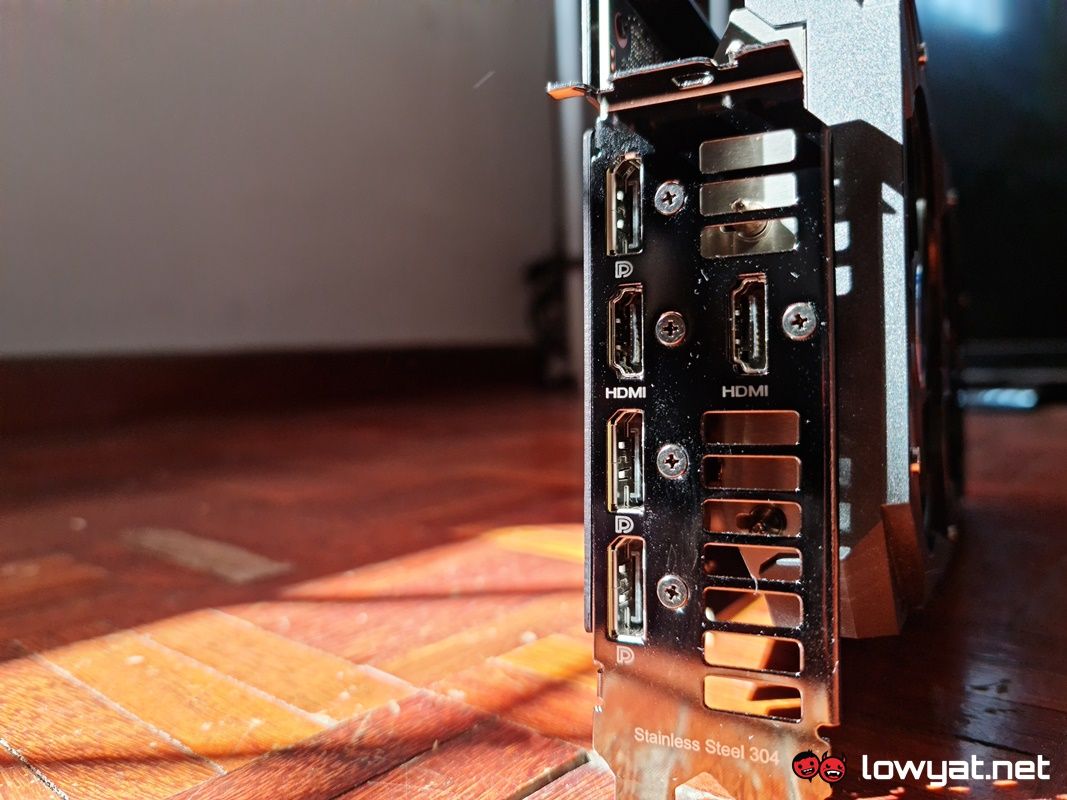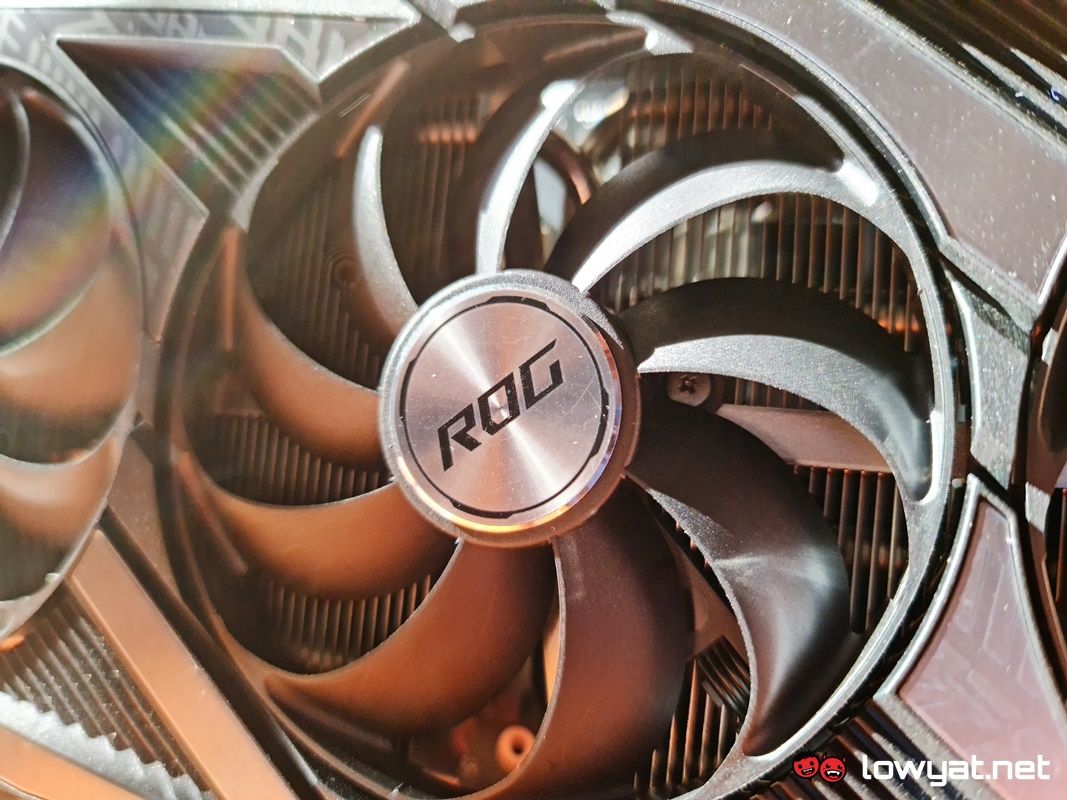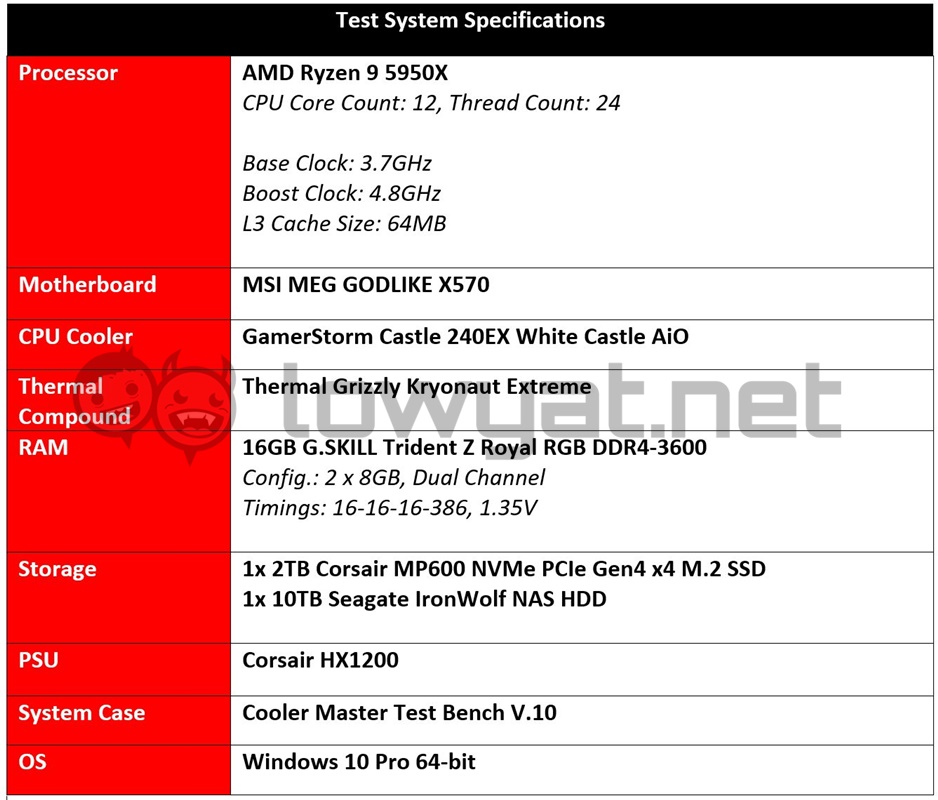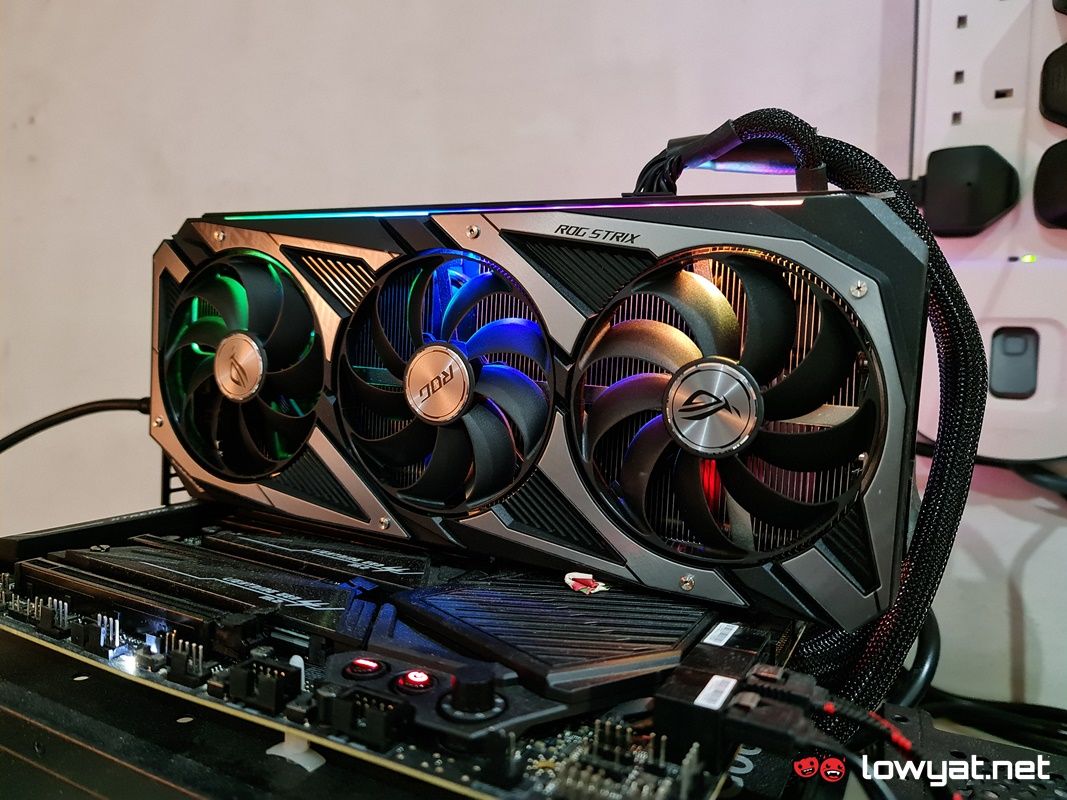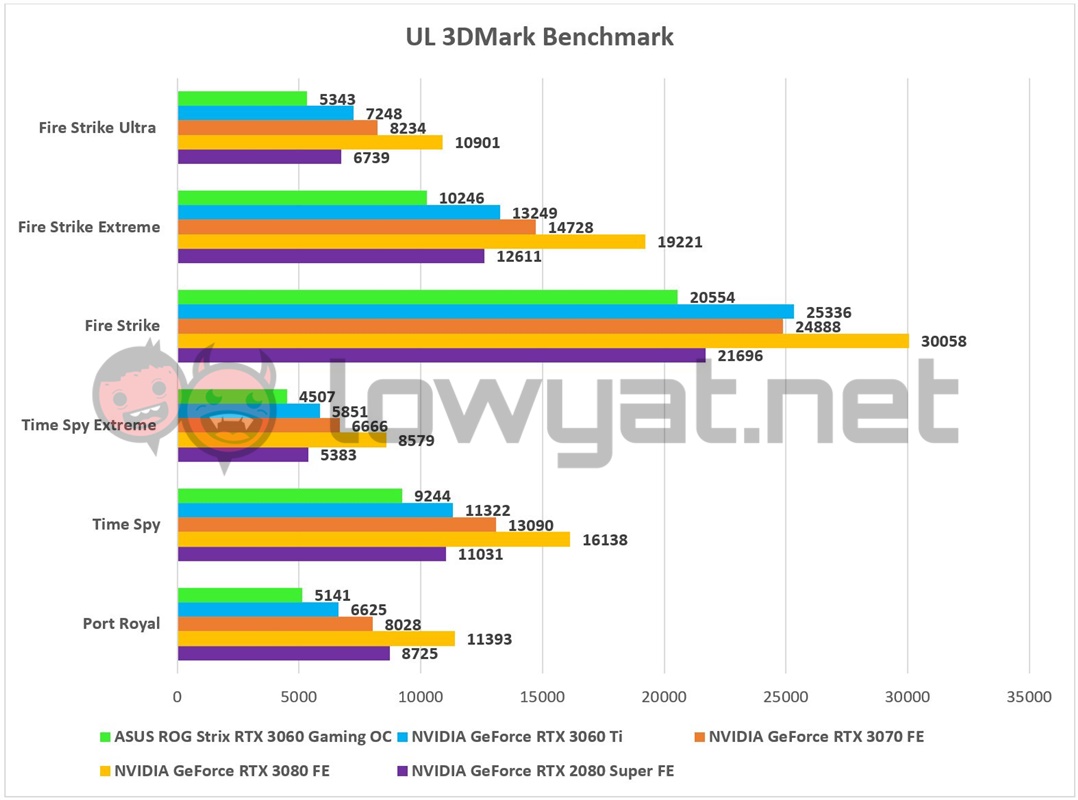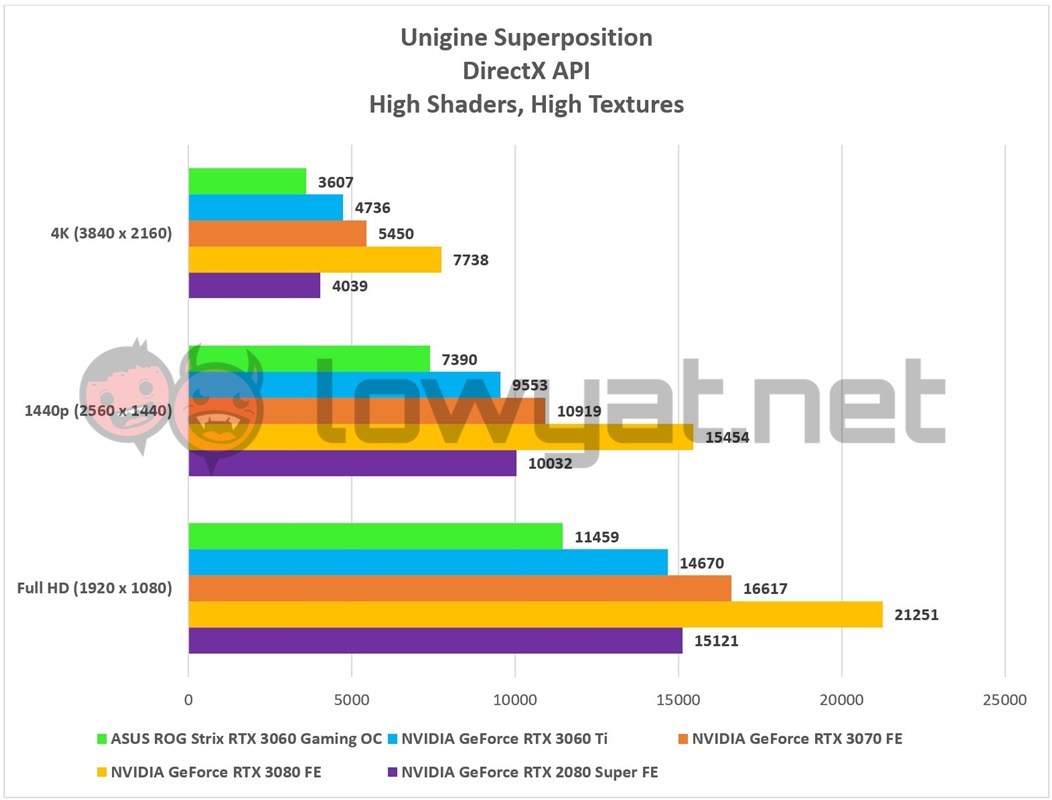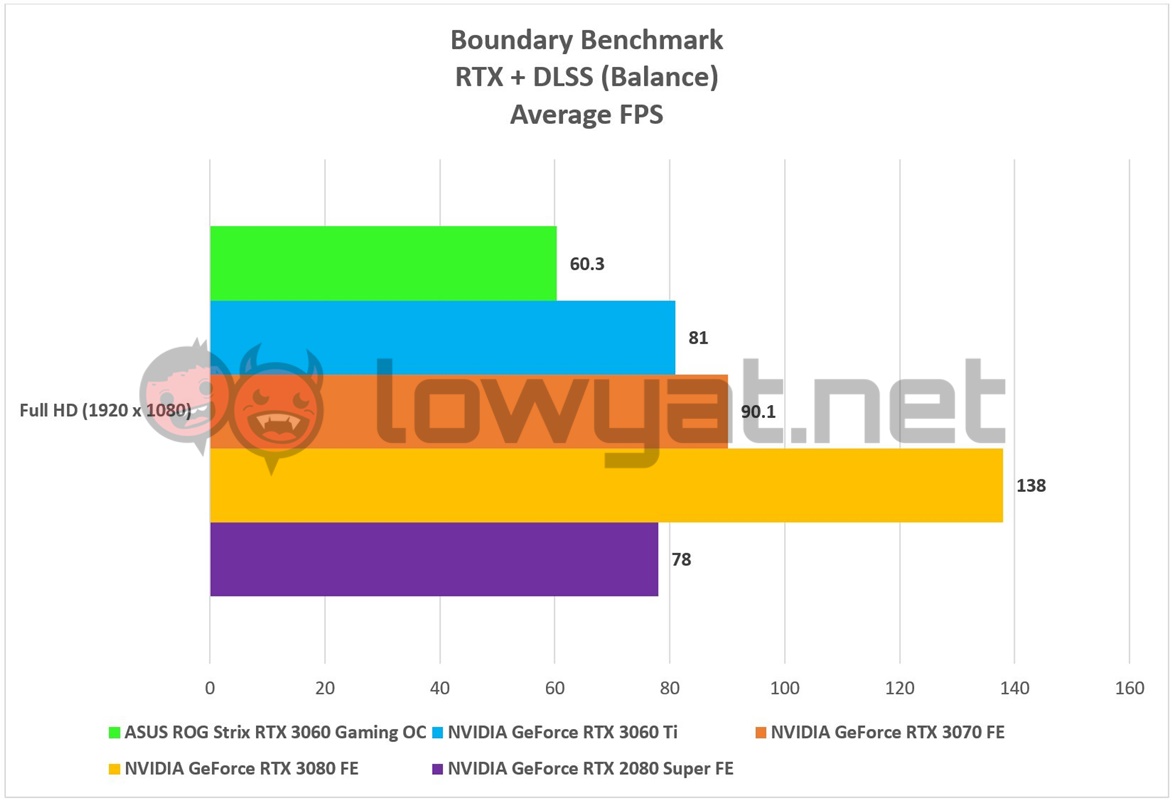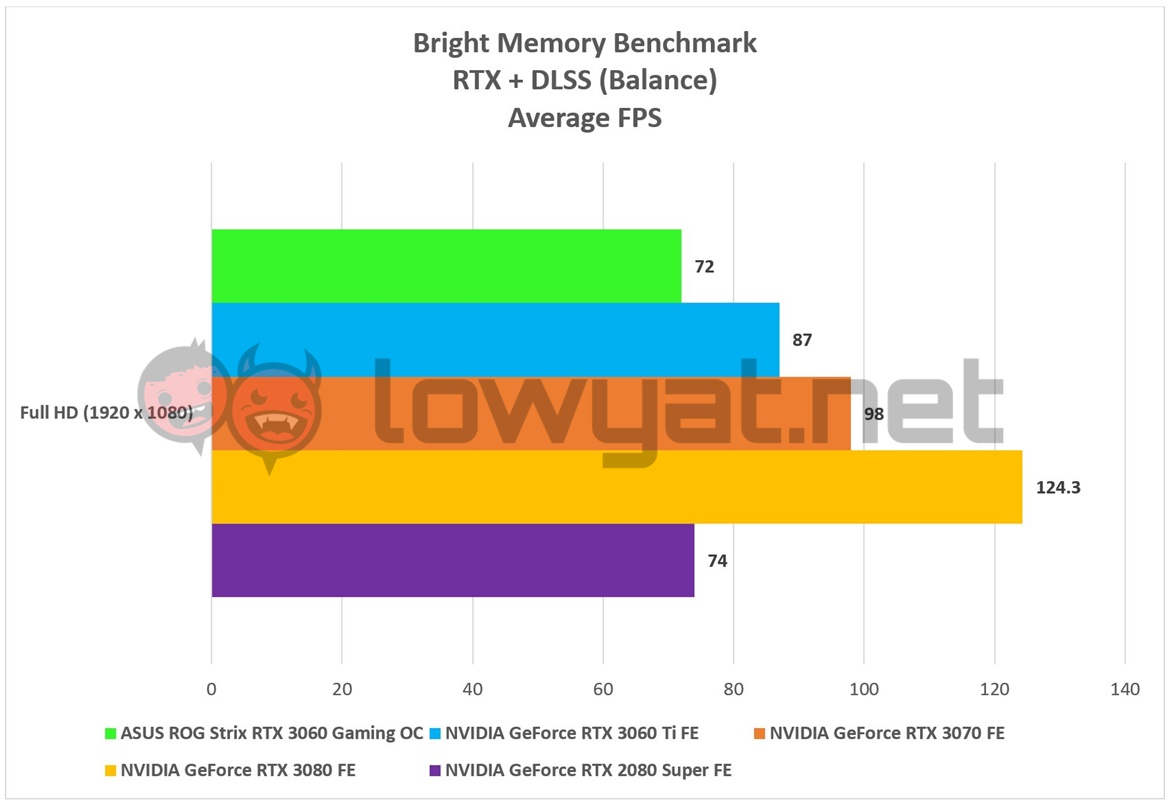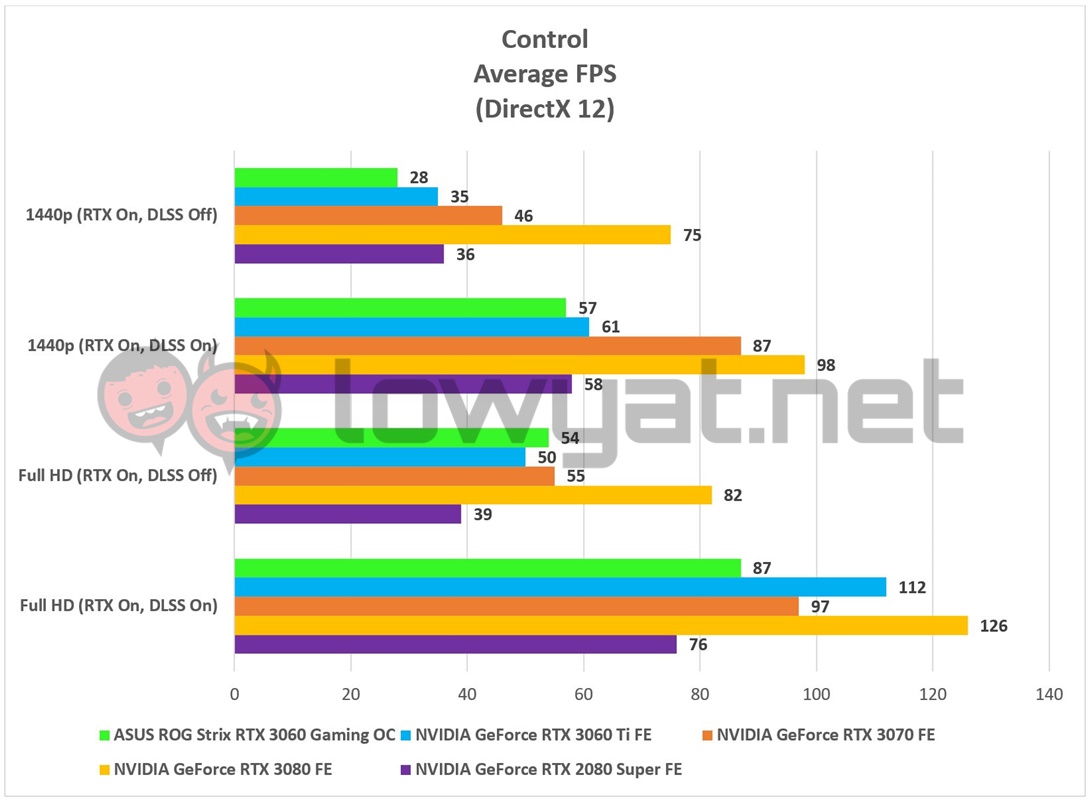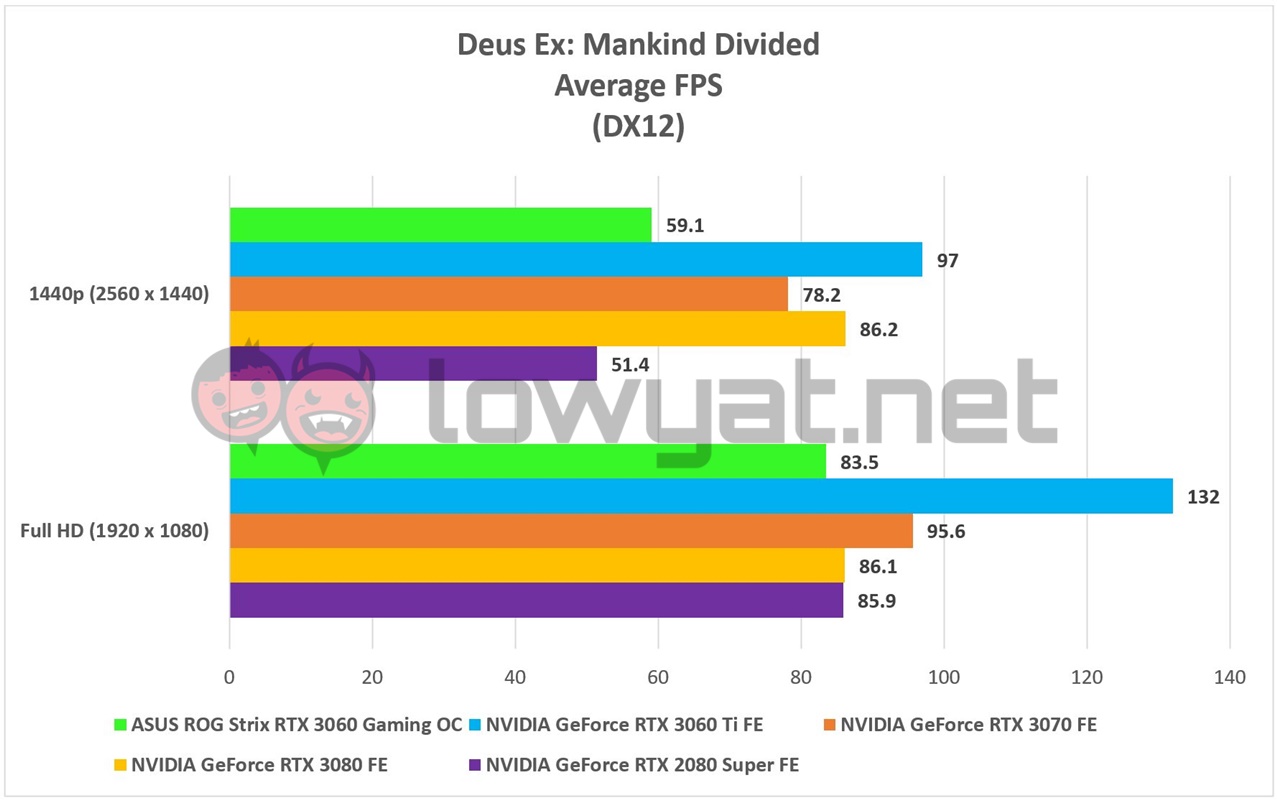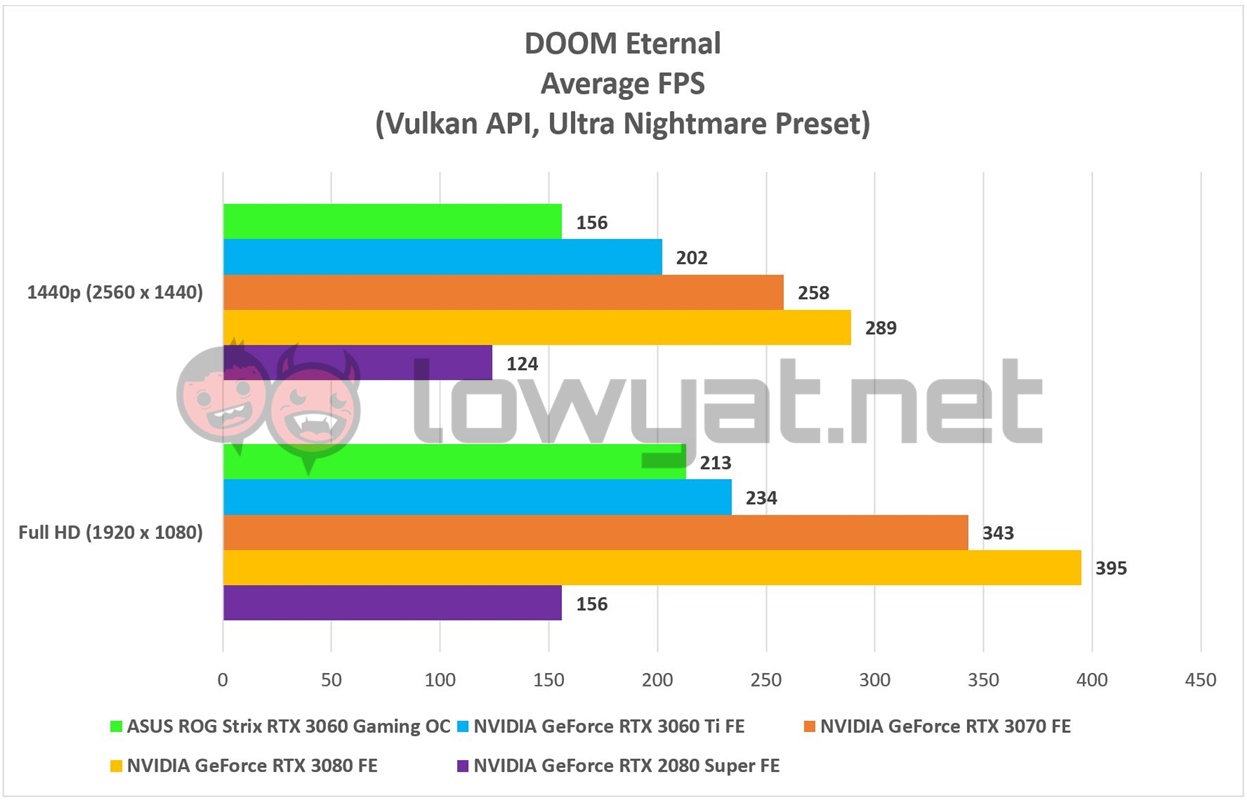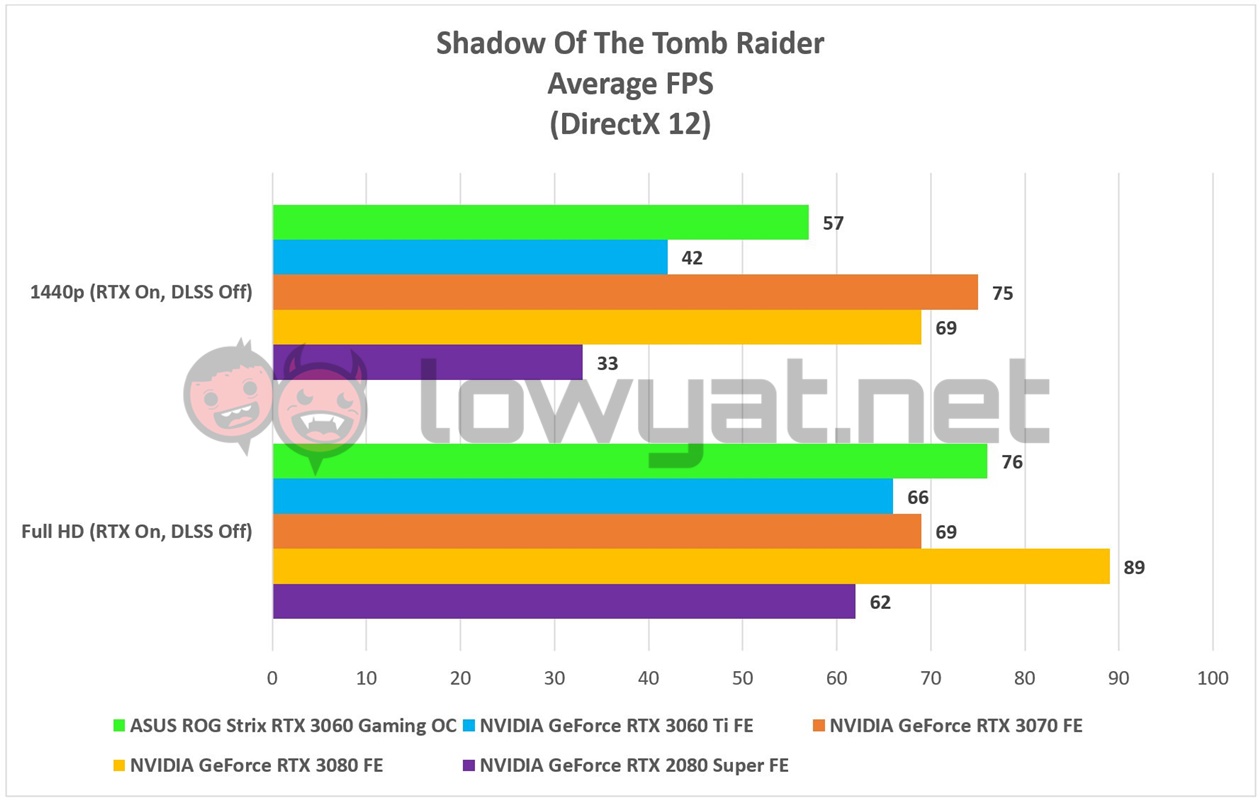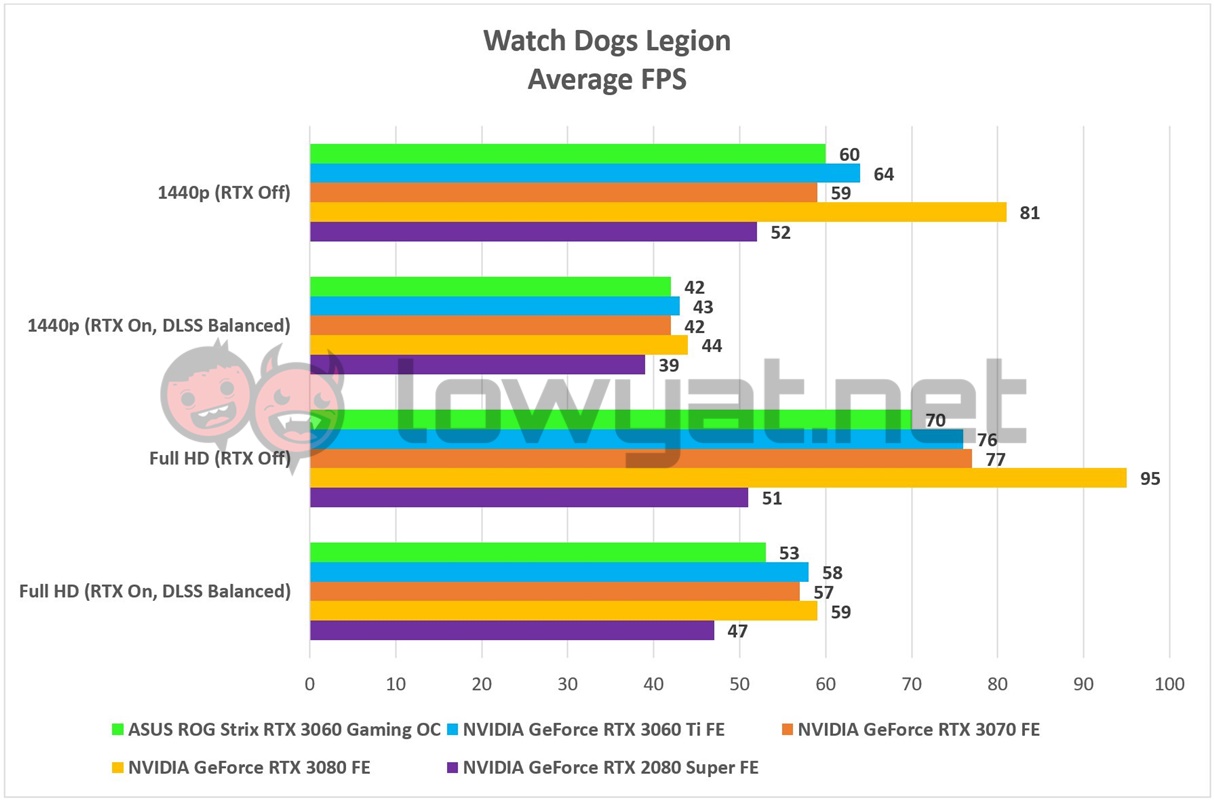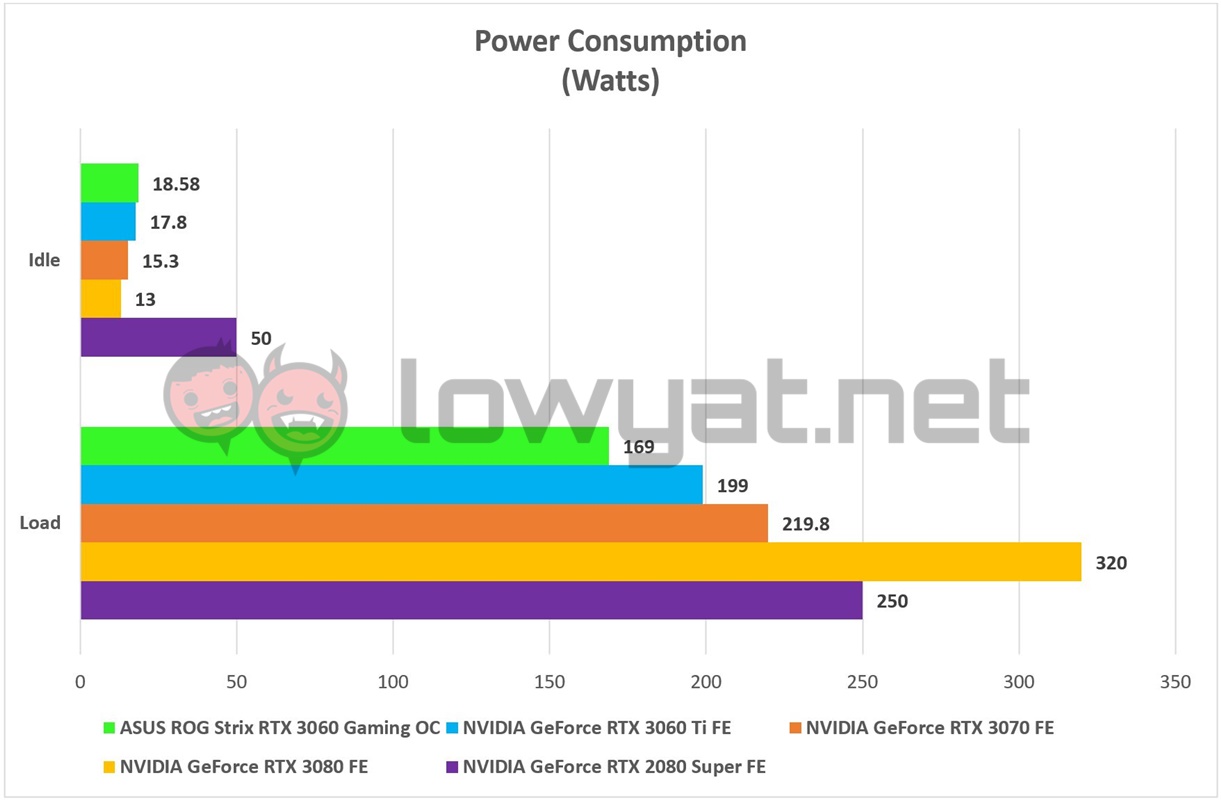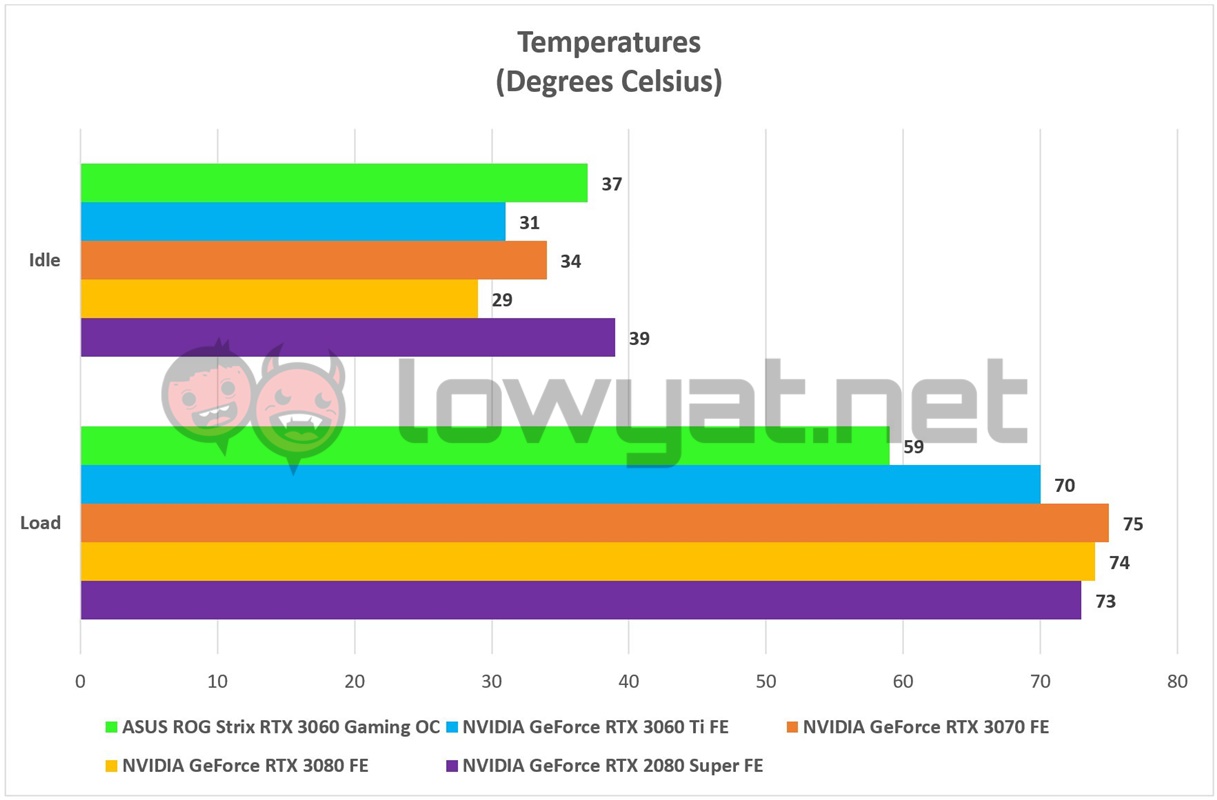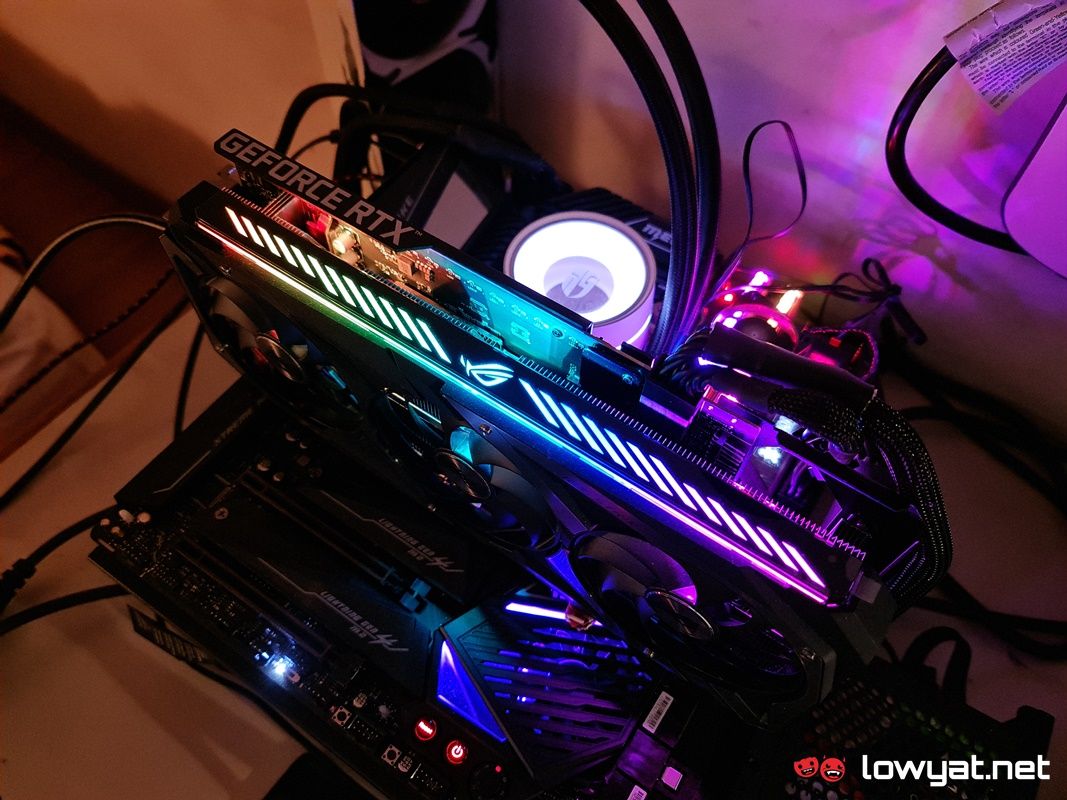Unlike NVIDIA’s Pascal-powered GeForce GTX 1060, its Turing-driven RTX 2060 series follow-up, and more like its GTX 1660 series. There is, sadly, no Founders Edition of the RTX 3060. To that end and in this particular review, we’ll be taking a look at an overclocked RTX 3060, in all the flavours and trimmings of ASUS’ high-end ROG Strix Gaming lineup.
Specifications
Design
Ask any PC gamer worth their salt about graphics cards and they’ll tell you that one major benefit to having graphics cards with custom, third-party cooling solutions is they tend to have marginally better performance than a card fitted with reference coolers. As is the case with ASUS’ ROG Strix series, the brand’s take on this RTX 3060 comes with a full triple-fan design, complete with the Axial-tech fans that make use of reversed rotations to keep all parts of the PCB and the massive heatsink beneath it as cool as possible.
One other design element that can easily be considered a trend among NVIDIA’s brand partners is how the heatsinks and cooler shrouds are substantially longer than the PCB. To be fair, ASUS and its rivals seem to only do this with whatever entry-level and mid-range GPUs that launch from NVIDIA or AMD, but never with their higher-end cards. This isn’t me saying that I hate such a design, by the way; out of all possible cooler shroud designs I have seen, the current ROG Strix template is one of the nicer looking ones I have seen. And yes, the card has enough RGB lighting to act as a night light.
The aesthetics aside, the rest of the RTX 3060 is as advertised by NVIDIA. You get a 4GB more graphics memory than the RTX 3060 TI at 12GB of GDDR6, but that is constrained by the GPU’s 192-bit memory bus and slightly lower CUDA core count of 3584 cores. Of course, being an RTX card, you also gain access to NVIDIA’s ray-tracing and DLSS technology.
Testbench
Let’s be realistic here: if you are setting your sights on an RTX 3060, you are very clearly not hoping to maintain blistering framerates at 4K. Like its Pascal and Turing counterparts, this card was designed for the groups that are content with playing games at Full HD with high refresh rates (most of the time), and maybe the occasional jump into 1440p. To that end, I am merely looking at the performance of the card at those two resolutions. At least, from a gaming standpoint. For comparison, I am benching the RTX 3060 against its step-up sibling, the RTX 3060 Ti, the RTX 3070, RTX 3080, and last generation’s RTX 2080 Super. As to why I have chosen these cards, their performance metrics were already available from prior reviews and also, I have yet to actually benchmark the RTX 2060 super or GTX 1660 Super with a couple of the newer titles.
Benchmarks
In the synthetic benchmark portion of our review, the ROG Strix RTX 3060’s performance isn’t all too surprising. By comparison to the GTX 1060 and GTX 1660 Super, the card definitely pulls ahead by leaps and bounds, but it is also clear that NVIDIA doesn’t want the card to overstep its boundaries in the GPU hierarchy. Despite it having more memory than the RTX 3060 Ti, the card is trailing its bigger brother by a substantial margin.
For gaming, I put the RTX 3060 through its paces with my usual game list, although you’ll notice that Battlefield V (BFV) is no longer present. That’s actually due to two reasons: First, my copy of the game was no longer available outside of EA’s new Play subscription service and second, I do not currently have a subscription to EA Play.
Moving on, we see that the card is more than capable of standing up for itself in the majority of titles, especially in Full HD. At that resolution, I am actually seeing average framerates holding above or dipping just below the 60 fps mark, but also sustaining more than 100 fps.
One such title being DOOM Eternal and at its Ultra Nightmare graphics preset, no less.
For ray-tracing and DLSS-capable titles such as Shadow of the Tomb Raider and Watch Dogs Legion, the RTX 3060 did show signs of choking initially but for the most part, it barely broke a sweat in the frames department.
Temperature And Power Consumption
Speaking of sweating, NVIDIA most certainly kept its word on keeping the power envelope of the RTX 3060 as low as possible, with the GPU actually consuming less power than the RTX 3060 Ti. Even when running on a full load, our ROG Strix variant never drew more than 169W consistently off the wall.
On another note, the overall temperature of the ROG Strix RTX 3060 is also quite staggering. On average, the card idles around 37°C but when place under stress, its maximum temperature doesn’t budge beyond 59°C. That said, I am using an open testbed and the ambient room temperature is between 19°C and 20°, so those may be contributing factors to the card’s lower peak thermals. Also, the fans were relatively silent even while spinning hard and I detected no coil whine from them.
Conclusion
To borrow Jen-Hsun’s quote here: if you’ve been planning on trading up from your current Pascal-powered GTX 1060, there’s probably no better time to do so. The performance leap of the RTX 3060 notwithstanding, the card is also a 2nd generation RTX GPU, complete with all the additional bells and whistles to complement the gaming experience, wherever applicable. However, at RM2670, recommending the ASUS ROG Strix RTX 3060 Gaming OC can be a little difficult, given the price discrepancy between its sibling. For just RM20 more, you can get a TUF Gaming RTX 3060 Ti, and if you’re willing to fork out for an additional RM230, there’s also the ROG Strix RTX 3060 Ti Gaming OC. But, as I mentioned, if it’s a reasonably price GeForce RTX 30 series card that is more than capable at Full HD gaming, take this model into consideration.
